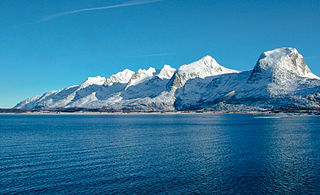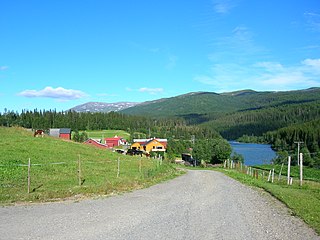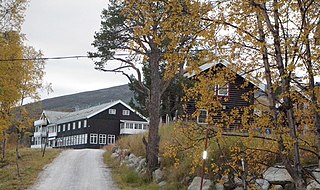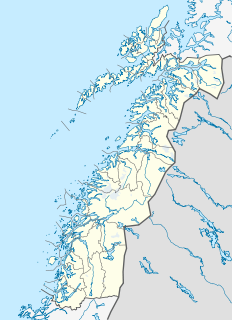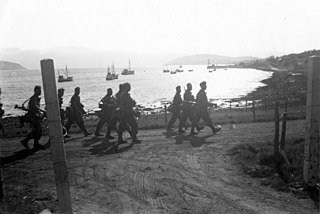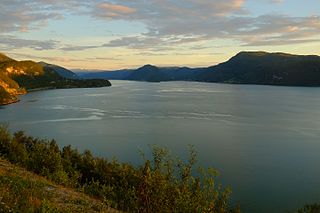| Langset | |
|---|---|
| Village | |
Location in Nordland | |
| Coordinates: 67°08′12″N15°27′06″E / 67.13667°N 15.45167°E Coordinates: 67°08′12″N15°27′06″E / 67.13667°N 15.45167°E | |
| Country | Norway |
| Region | Northern Norway |
| County | Nordland |
| District | Salten |
| Municipality | Saltdal |
| Elevation [1] | 44 m (144 ft) |
| Time zone | CET (UTC+01:00) |
| • Summer (DST) | CEST (UTC+02:00) |
| Post Code | 8250 Rognan |
Langset (Lule Sami : Laŋsæhtta) [1] is a basic statistical unit in the sub-area of Nedre Saltdal ('Lower Saltdal') in the municipality of Saltdal in Nordland county, Norway. The area is located north of Rognan and Saksenvik and south of Setså on the east side of Saltdal Fjord (Saltdalsfjorden). European route E6 and the Nordland Line pass through the area. [2] [3]
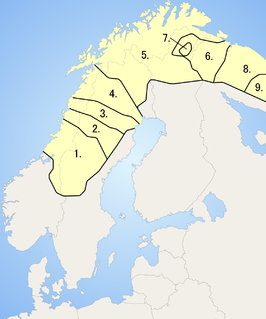
Lule Sámi language(julevsámegiella) is a Uralic, Sámi language spoken in Lule Lappmark, i.e. around the Lule River, Sweden and in the northern parts of Nordland county in Norway, especially Tysfjord municipality, where Lule Sámi is an official language. It is written in the Latin script, having an official alphabet.
The basic statistical unit is a type of statistical unit used by Statistics Norway to provide stable and coherent geographical units for regional statistics in Norway. Basic statistical units are subdivisions of municipalities, and cover generally homogeneous areas. Most basic statistical units include a few hundred inhabitants, but as their borders are near constant, this can vary widely over time.

Saltdal is a municipality in Nordland county, Norway. It is part of the traditional district of Salten. The administrative centre of the municipality is the village of Rognan. Other villages in Saltdal include Røkland and Lønsdal.
During the Second World War the Blood Road was built through the area. [4] It was constructed as a new segment of Norwegian National Road 50 between Rognan and Langset, where there was ferry service before the war. [3]

The German occupation of Norway during World War II began on 9 April 1940 after German forces invaded the neutral Scandinavian country of Norway. Conventional armed resistance to the German invasion ended on 10 June 1940 and the Germans controlled Norway until the capitulation of German forces in Europe on 8/9 May 1945. Throughout this period, Norway was continuously occupied by the Wehrmacht. Civil rule was effectively assumed by the Reichskommissariat Norwegen, which acted in collaboration with a pro-German puppet government, the Quisling regime, while the Norwegian King Haakon VII and the prewar government escaped to London, where they acted as a government in exile. This period of military occupation is in Norway referred to as the "war years" or "occupation period".

The Blood Road is a route northeast of Rognan in the municipality of Saltdal in Nordland county, Norway that was built by prisoners during the Second World War. The route was a new section of Norwegian National Road 50 between Rognan and Langset on the east side of Saltdal Fjord (Saltdalsfjorden), where there was a ferry service before the war. The specific incident that gave the road its name was a cross of blood that was painted on a rock cutting in June 1943. The blood came from a prisoner that was shot along the route, and the cross was painted by his brother.

European route E6 is the main north-south road through Norway, and the west coast of Sweden. It is 3 088 km long and runs from the southern tip of Sweden at Trelleborg, into Norway and through almost all of the country north to the Arctic Circle and Nordkapp. The route ends in Kirkenes close to the Russian border.


